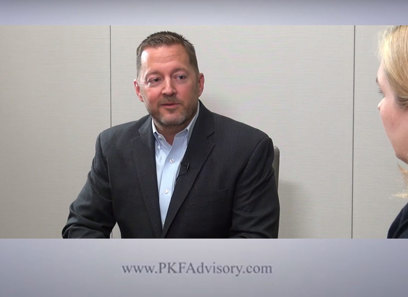Recognize the rise of Deepfake Social Engineering Attacks tricking users.
Recognize the rise of Deepfake Social Engineering Attacks tricking users.
Blog Article
Future-Proof Your Service: Secret Cybersecurity Forecasts You Need to Know
As services confront the accelerating pace of digital change, recognizing the evolving landscape of cybersecurity is important for long-term resilience. Predictions recommend a substantial uptick in AI-driven cyber threats, alongside enhanced regulatory analysis and the important shift towards Absolutely no Trust fund Style. To properly browse these obstacles, companies need to reassess their protection strategies and foster a culture of recognition among employees. The effects of these modifications prolong past plain conformity; they can redefine the really structure of your operational safety and security. What steps should firms require to not just adapt but thrive in this brand-new setting?
Rise of AI-Driven Cyber Threats

Among one of the most concerning advancements is making use of AI in producing deepfakes and phishing schemes that are incredibly convincing. Cybercriminals can produce audio and video material, posing execs or relied on people, to control victims right into revealing delicate details or accrediting deceitful purchases. Additionally, AI-driven malware can adjust in real-time to escape detection by typical security measures.
Organizations should acknowledge the immediate demand to boost their cybersecurity structures to combat these advancing hazards. This includes investing in innovative risk discovery systems, fostering a society of cybersecurity awareness, and implementing durable case response plans. As the landscape of cyber dangers transforms, aggressive measures become crucial for protecting sensitive information and keeping business stability in an increasingly digital globe.
Boosted Concentrate On Data Personal Privacy
How can companies effectively browse the expanding focus on information privacy in today's digital landscape? As regulatory frameworks progress and customer expectations increase, companies must prioritize durable data privacy strategies.
Purchasing worker training is critical, as staff awareness directly affects data security. Organizations ought to cultivate a culture of personal privacy, urging workers to recognize the importance of safeguarding sensitive information. Additionally, leveraging modern technology to boost data security is necessary. Implementing sophisticated security methods and secure data storage services can considerably minimize dangers associated with unauthorized access.
Cooperation with lawful and IT teams is important to align data personal privacy efforts with business purposes. Organizations needs to additionally involve with stakeholders, including consumers, to communicate their commitment to data personal privacy transparently. By proactively more information dealing with information privacy problems, services can construct count on and boost their online reputation, ultimately adding to lasting success in an increasingly inspected digital environment.
The Change to No Depend On Architecture
In response to the evolving hazard landscape, companies are increasingly adopting No Trust fund Design (ZTA) as a fundamental cybersecurity approach. This approach is based on the principle of "never trust fund, always confirm," which mandates constant verification of user identifications, gadgets, and data, regardless of their area within or outside the network perimeter.
Transitioning to ZTA includes carrying out identification and gain access to management (IAM) services, micro-segmentation, and least-privilege gain access to controls. By granularly regulating access to resources, companies can mitigate the risk of insider threats and reduce the effect of outside breaches. Moreover, ZTA incorporates robust surveillance and analytics abilities, allowing companies to detect and reply to anomalies in real-time.

The shift to ZTA is likewise fueled by the boosting adoption of cloud solutions and remote work, which find out here have actually expanded the attack surface (cyber resilience). Traditional perimeter-based security models want in this new landscape, making ZTA a more resistant and flexible framework
As cyber threats continue to grow in sophistication, the fostering of Zero Count on concepts will be important for organizations looking for to protect their properties and keep regulative compliance while ensuring company continuity in an unpredictable atmosphere.
Governing Modifications imminent

Upcoming regulations are anticipated to deal with a variety of problems, including information privacy, breach notice, and event action protocols. The General Information Protection Policy (GDPR) in Europe has actually set a criterion, and comparable structures are emerging in various other regions, such as the United States with the proposed federal personal privacy legislations. These guidelines commonly enforce stringent penalties for non-compliance, stressing the demand for organizations to prioritize their cybersecurity steps.
Furthermore, markets such as finance, healthcare, and essential framework are most likely to deal with more strict needs, mirroring the sensitive nature of the information they manage. Conformity will certainly not simply be a legal responsibility but an important part of structure trust with customers and stakeholders. Organizations needs to remain ahead of these article source changes, integrating regulative requirements right into their cybersecurity techniques to make certain durability and safeguard their assets effectively.
Significance of Cybersecurity Training
Why is cybersecurity training a vital part of an organization's protection technique? In a period where cyber threats are progressively sophisticated, companies should acknowledge that their employees are usually the initial line of defense. Reliable cybersecurity training gears up personnel with the understanding to identify potential dangers, such as phishing attacks, malware, and social design tactics.
By fostering a culture of security awareness, organizations can substantially minimize the risk of human error, which is a leading source of information breaches. Regular training sessions make certain that workers stay informed concerning the most up to date hazards and ideal techniques, thereby boosting their capacity to respond appropriately to incidents.
Furthermore, cybersecurity training promotes conformity with regulatory requirements, minimizing the danger of lawful effects and punitive damages. It likewise encourages employees to take possession of their role in the company's safety framework, bring about an aggressive rather than reactive method to cybersecurity.
Conclusion
In final thought, the developing landscape of cybersecurity needs proactive procedures to deal with emerging risks. The increase of AI-driven assaults, coupled with enhanced information privacy concerns and the change to Zero Trust fund Design, requires an extensive method to protection.
Report this page